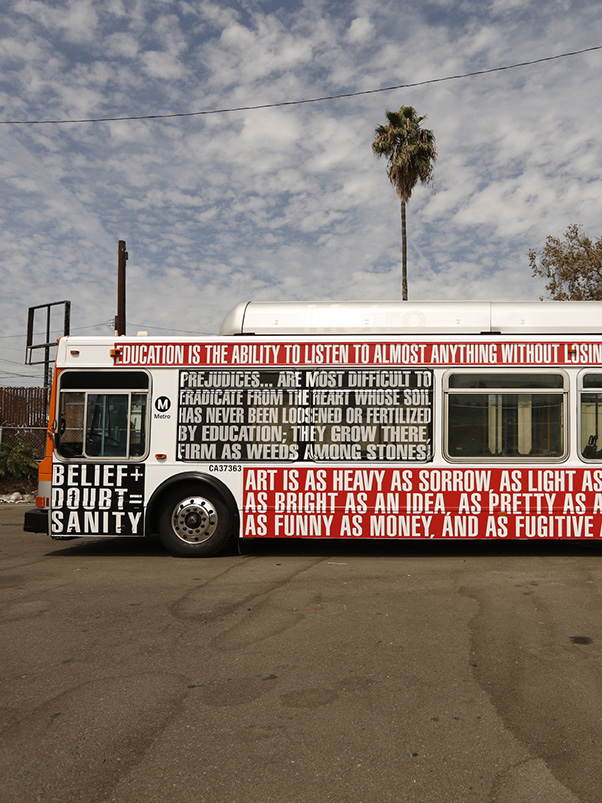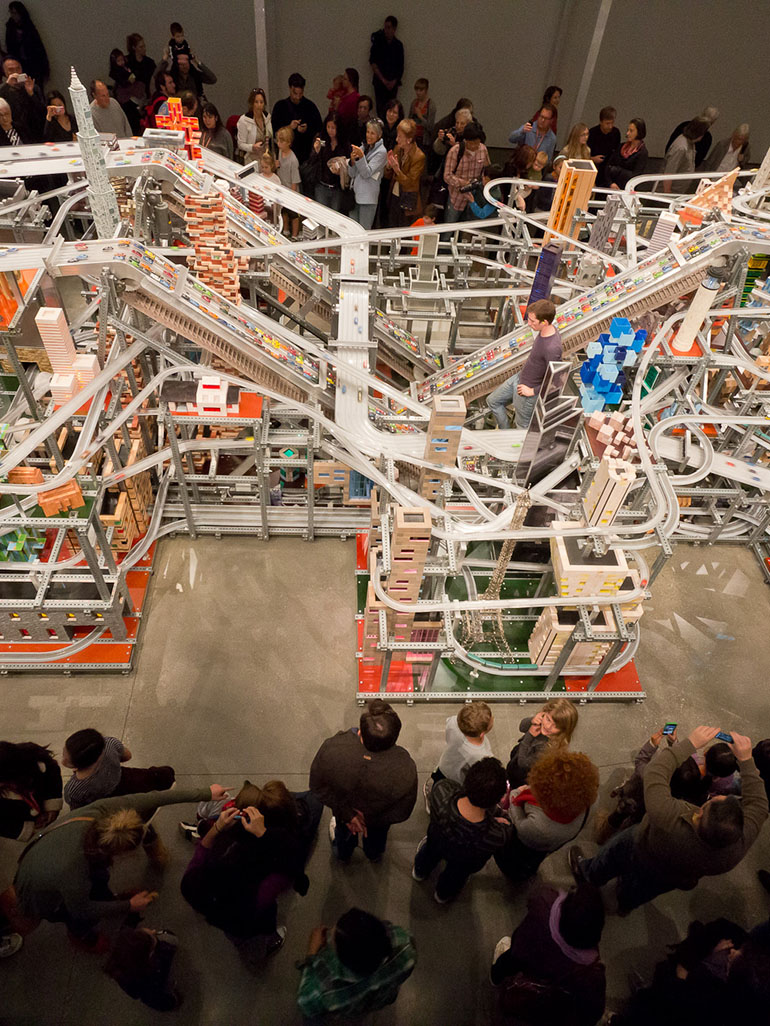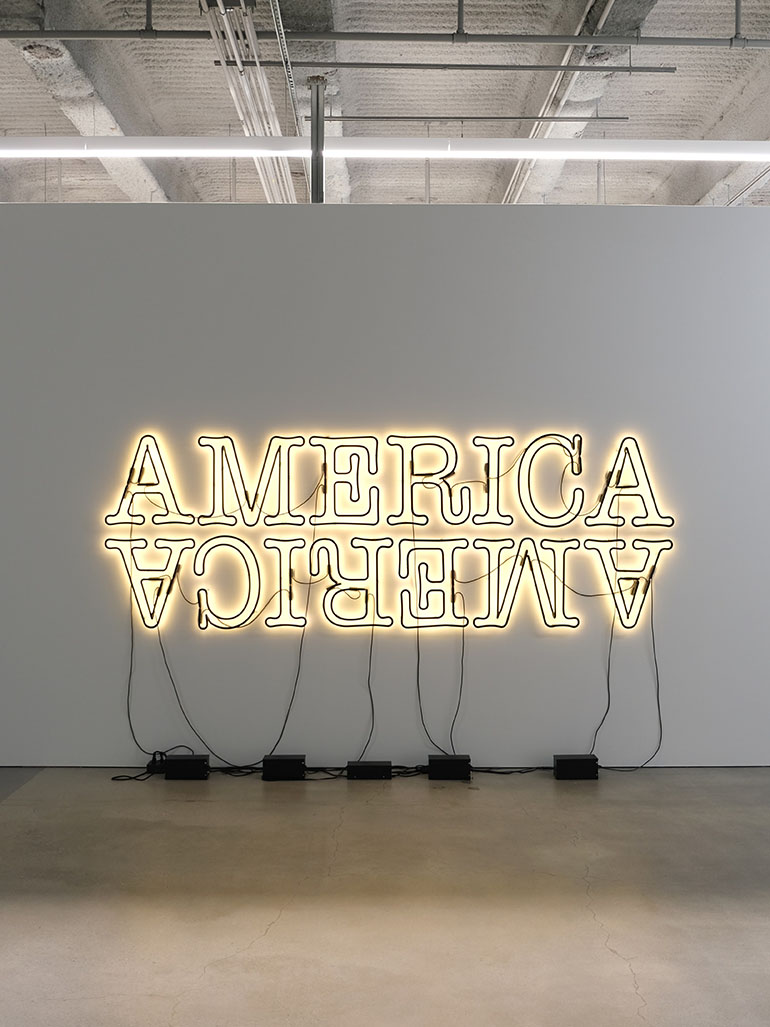
531 Flower St, Los Angeles, CA 90071 Copy to clipboard
34.051094, -118.257133 Copy to clipboard
Before you go
Nearby attractions: Consider visiting the nearby MOCA Grand Avenue and The Broad museum. Also, check out Michael Heizer's 'North, East, South, West' (0.1 miles) and Alexander Calder’s 'Four Arches' (0.5 miles).
Visit duration: Plan to spend about 20-30 minutes enjoying the sculpture.
Best visit time
Early morning or late afternoon for the best light and fewer crowds.
Directions
7th Street/Metro Center Station
By foot: Exit onto Figueroa Street, walk north to 4th Street, turn right, and find the artwork in Bank of America Plaza.
Lines: Red, Purple, Blue, Expo
Walking distance: 0.1 miles
Pershing Square Station
By foot: Exit onto Hill Street, walk north to 4th Street, turn left, and find the artwork in Bank of America Plaza.
Lines: Red, Purple
Walking distance: 0.4 miles
Parking
By foot: Paragon Parking lot is located 0.2 miles away.
Introduction
Is it possible for a single sculpture to redefine public space? Double Ascension by Herbert Bayer 1, created in 1973, does just that. Located in the heart of Los Angeles 2, this innovative work showcases the artist’s pioneering approach. Bayer, an influential figure of the Bauhaus movement 3, influenced art, design as well as architecture.
This significant piece reflects the modernist movements of the mid-20th century and Bayer’s approach and integration of art within public spaces. Double Ascension also serves as a bridge between historical artistic movements and contemporary public art. It shows the enduring influence of Bauhaus principles in modern design, which advocate for the integration of art, design, and architecture 4.
Creating Double Ascension involved a dedicated team of engineers and artisans working under Bayer’s direction. The sculpture measures 14.5 feet (4.4 meters) in height and 33 feet (10 meters) in width and is constructed from steel, a material chosen for its durability and modern aesthetic. The project took approximately six months to complete, reflecting the meticulous planning and execution required to bring Bayer’s vision to life.

Concept & style
Double Ascension is a quintessential example of mid-20th-century modernist sculpture. The sculpture’s abstract form and interactive nature reflect the Bauhaus ideals, making it a significant contribution to the modernist canon. Bayer employed techniques rooted in geometric abstraction 5, a distinguishing feature of his training.
One of the most interesting features of Double Ascension is its design, which creates a dynamic visual experience as viewers move around it. The sculpture’s form encourages viewers to engage with it from multiple perspectives, making it more than a static object. This level of public interaction was relatively novel 6 and contributed to the evolving concept of public art 7.
This three-way exchange is a hallmark of Bayer’s work, emphasizing the relationship between art, space, and the observer. The use of painted steel as a material adds to the modernist aesthetic, showcasing Bayer’s skill in manipulating industrial materials to create elegant and intriguing forms.
The use of clean lines and precise forms emphasizes the interplay of light and shadow. The color changes depending on the situation, with striking red or fire-orange hues against the backdrop of the surrounding twin dark green granite towers, highlighting the art’s response to its environment.
Installed within a 60-foot diameter pool of water, the appearance changes with different lighting conditions and water flow, adding a vibrant element through reflections that alter the viewer’s perception of the piece.

Analysis
Symbolism & themes
Symbolism & themes
Symbolically, Double Ascension can be seen as a representation of upward mobility and aspiration, themes that were particularly relevant during the socio-political upheavals of the 1970s. The use of steel and geometric forms ties the work to the industrial advancements of the era, while the ascending staircases suggest movement and growth.

Cultural & social context
The creation of Double Ascension in 1973 coincides with Herbert Bayer’s late career, during which he focused on large-scale 8 site-specific 9 public art projects. The artwork is a product of his extensive background in graphic design, architecture, and environmental art, reflecting his belief in the integration of art into everyday environments.
Bayer, the last living member of the Bauhaus School of Design, created Double Ascension during a period marked by significant social and political changes in the United States. This era saw the rise of various social movements, including civil rights, environmentalism, and feminism, which influenced many artists.
The artist’s work, with its focus on geometric abstraction and public engagement, reflects the modernist ideals of making art accessible and integrated into everyday life, resonating with the broader cultural push towards democratizing art and breaking down barriers between the public and artistic expression.

Critical reception & interpretations
Upon its unveiling, Double Ascension garnered positive reviews for its unique design and creative use of space. Over the years, interpretations of the sculpture have varied, with some viewing it as a symbol of progress and ascension while others see it as a commentary on the relationship between humans and the built environment.
However, like many public art pieces, it has faced occasional criticism for its geometric and abstract design, which some viewers find challenging to interpret. While visually appealing, some have argued that Double Ascension lacks the emotional depth and narrative complexity found in other forms of contemporary art.
Furthermore, the emphasis on form over function might be considered a limitation, particularly in a city like Los Angeles, where public art often serves as a medium for social commentary and activism. The sculpture may not address or engage with the pressing social issues of its time, potentially reducing its relevance in the broader context of public art.
Additionally, the sculpture’s integration into the urban environment of Bunker Hill could be seen as blending too seamlessly into its surroundings, making it less noticeable to the casual observer. Despite this, the sculpture remains a beloved part of Los Angeles, illustrating the ongoing dialogue between modernist art and public perception.

Comparative significance
Herbert Bayer’s other notable works include Articulated Wall in Denver, CO, and Chromatic Gate in Santa Barbara, CA. Like Double Ascension, these pieces reflect his commitment to integrating art with public spaces and exploring geometric forms.
However, Double Ascension stands out for its spiraling design, which offers a more dynamic interaction with the viewer compared to his other works.
From conception to pop culture fame
The naming dilemma
The naming dilemma
Bayer was a close friend of ARCO CEO Robert Orville Anderson, who commissioned him to create the monumental sculpture for the ARCO Plaza prior to its completion in 1972. This commission also saw Bayer design ARCO’s corporate logo and all related corporate branding.
According to online sources 1011, the sculpture was originally titled Stairway to Nowhere, a name Anderson found humorous but felt shareholders of the oil company would not appreciate. Therefore, he suggested renaming it to “Double Ascension,” a name it still holds today. The sculpture, completed in 1972 and dedicated on January 20, 1973, stands prominently between the 51-story office towers, which served as ARCO’s corporate headquarters.

Kirby Plaza in pop culture
The plaza, officially named City Bank Plaza, has also been referred to as Arco Plaza and Kirby Plaza. The latter name comes from its depiction in the TV show “Heroes,” where it served as a significant fictional location. Despite its various names in popular culture, the building’s official name remains City Bank Plaza.
Featured in “Heroes” & iconic movies
The sculpture has appeared in several films and TV shows, including Marathon Man (1976), Pretty Woman (1990), Fun with Dick & Jane (2005), Rush Hour 3 (2007), and multiple episodes of Heroes. It is











